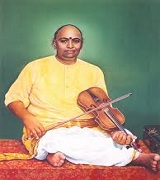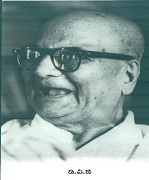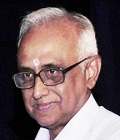Main Feature

Profile - Kumbakonam Rajamanickam Pillai
Rajamanickam Pillai was a remarkably able and astute accompannist, as well as a successful soloist. But his popularity rested not merely on his abilities with the violin but perhaps also on his other qualities— kindness, magnanimity, generosity and friendliness— as well as his wit. He was a largehearted teacher who trained many disciples. And he was a good friend to many. Rajamanickam was born on 5 August 1898 in Kumbakonam in the Tanjavur district of Tamil Nadu which has given to Carnatic music many of its leading lights. Pillai belonged to the Isai Velalar community whose members, male and female, became renowned for cultivating the arts of music and dance. A few children born to his mother Kamalathammal before Rajamanickam did not survive.
Special Feature

ANTAHPURA GEETEY
The Chennakeshava temple is host to the exquisite Hoysala art. Built in 1117 AD by Vishnuvardhana, monarch of the Hoysala dynasty which ruled a major part of Karnataka between the 11th and the 14th centuries, Vishnuvardhana was the greatest of the kings of this historically important dynasty. He was as much a liberal patron of arts and letters as he was a protector of all religious faiths. The following verse from his inscription at the Belur temple testifies to the latter aspect.
Special Feature

Teaching Of Indian Music
There are classes for advanced students, though these classes can be attended by other students as well. Great emphasis is laid on the quality of learning, rather than the quantity. Only a limited number of raga-s and tala-s are taught in detail, though, at the end of the course, the student should be familiar with a large number of raga-s and tala-s. Along with theory and history of music, the students also acquire knowledge of ancillary aspects such as voice modulation and the reading and writing of notation. However, weightage is given to performing competence.


